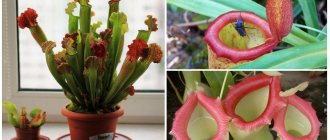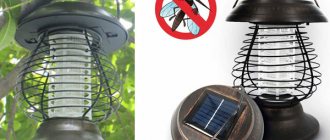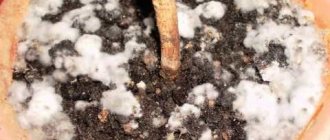What are live repellents
A repellent is a product that helps repel insects.
Something animated cannot be attributed to it. A plant is a living object and cannot be a repellent. Accordingly, these substances come from him. That is, in order for the expression to be as concise as possible, everything unnecessary is removed from the conversation, and the result is a repellent plant. Not everyone can have a repellent effect. Only those plants that contain essential oils are endowed with this property. For example, fresh spices can be considered repellents.
There are various plant forms that are planted to control insects:
- Herbs. They are the most popular because they are double effective. Herbs can be used to repel mosquitoes and as a seasoning.
- Flowers. A positive quality is that they exist in small sizes, so you can grow a flower in a pot and place it on your windowsill.
- Shrubs.
- Trees. Their number is very small. Another disadvantage is that the roots grow and crack the foundation if you plant such a plant near the house.
Advice! You should be very careful when choosing plants that can fight mosquitoes. It is necessary to take into account the flowering time so that protection is available all summer. That is, one plant replaced another.
The method of using live repellents is popular due to its environmental friendliness. The plants are safe for health and growing does not take much effort. The big advantage of living repellents is their versatility, that is, they can act on several types of insects at once - mosquitoes, midges, ants, and so on. The most important thing is to correctly place such plants on your site.
Using natural repellers is safe and environmentally friendly
How do plant repellents work?
In the process of evolution, some representatives of the flora have acquired the ability to protect themselves from pests and diseases. To do this, they produce special substances: phytoncides and essential oils. People can smell the smell of some of them well, but some are impossible to detect. The human body and insects are designed completely differently, so for us plants that repel mosquitoes and flies, a herb, a seasoning or a beautiful flower, but for insects they are deadly.
Now let's talk about the types of repellent herbs
Peppermint. It blooms almost all year round, is resistant to cold, but needs alternating light and shade.
Pennyroyal. The plant has a very strong smell and is not suitable for planting under a window, unlike planting around the perimeter of the garden. Plant growth up to 60 cm. Blooms in July-August.
Basil. This annual plant is used in cooking. This plant can be located anywhere in your yard, but the best place for it is your windowsill (in a pot, of course).
Cat mint. This weed can often be found along the side of roads and in vacant lots, but it smells pleasant (of lemon, which repels mosquitoes). Can grow up to one meter. Has the disadvantage that it can cause hallucinations, so be careful when landing.
Melissa or lemon balm. European weed. Grows on forest edges and ravines. It does not tolerate dampness, and its smell is also affected by shade. Blooms in June-August.
Citronella. It is divided into 2 species: Cymbopogon winterianus and Cymbopogon nardus. It grows up to 2 m. This plant becomes an annual in northern latitudes. To preserve this plant during winter, you need to plant it in a large pot and put it indoors.
Common tansy. Perennial weed. It grows everywhere. Height up to 150 cm. Has a characteristic specific smell. Flowering in July-September.
Garlic. Well, we are all familiar with garlic. It helps against mosquitoes when taken internally regularly.
Thyme or Thyme. Grown as a seasoning in the south, it also suppresses the carbon dioxide released by animals. Growth up to 40 cm. Flowering June-July.
Flowers against mosquitoes:
Lavender narrow-leaved. Growth up to 60 cm, rarely up to 1 m. Has a strong aroma. Grows well in the south.
Marigold. These plants externally form a compact bush. Growth up to 120 cm. Can be either annual or perennial. The smell is specific. Flowering from June until frost.
Geranium. There are approximately 40 species of these plants in Russia, from which you can choose the most suitable sample for your soil. Height difference. Fragrant geranium will look good on the windowsill.
Calendula. One-year-old. Must be in a well-lit place. Height up to 75 cm. Quite resistant to cold (up to 5°C). Flowering from June until frost.
Ageratum. Belongs to the Astrov family. Growth up to 50 cm. The plant is perennial, although in Russia it can also be annual. It is drought tolerant, but does not tolerate cold, and also has a strong need for light.
Flowers
Flowers against mosquitoes
In Russian conditions, repellent flowers can be divided into two categories: indoor and garden. And in parallel to perennial and annual. Perennial flowers are those that are shrubs in their homeland. In unfavorable conditions they remain herbaceous, and some die from frost.
Interesting!
The choice of flowers, especially indoor ones, is not great. In fact, geranium was hardly just an attribute in pre-revolutionary burgher houses. With a high degree of probability, it served as a modern repellent.
Mosquitoes can be repelled by:
- Lavender angustifolia is a “dry” feeling of flowers up to 60 cm high. As an exception, they grow up to 1 m. In the southern regions, lavender is an evergreen plant, but at the latitude of Moscow and to the north it freezes from frost. It has a strong aroma that repels mosquitoes.
- Marigold. Perennial or annual plants up to 120 cm high form a spreading or compact bush. Small-flowered Tagetes patula L. are grown in gardens. They bloom from June until frost. The smell is specific and may seem unpleasant.
- Geranium. About 40 species of geraniums grow in Russia. In any climate zone it is easy to choose a suitable species for planting in open ground. Plant height varies depending on living conditions. Cultivated fragrant geranium is best suited for growing on a windowsill to protect against mosquitoes.
- Calendula. An annual plant from the same Asteraceae family as marigolds. The height of the stems is up to 75 cm. Flowering from June until the first frost. Propagated by seeds. Loves lit places. Relatively cold-resistant (down to -5°C). Calendula tincture is often used to treat mosquito bites.
- Ageratum. A flower from the Aster family, up to 50 cm high. Perennial. Flowering from June until frost. Light-loving and drought-resistant. Ageratum Gaustona/Mexican is cultivated in horticulture. In Russia it is grown as an annual. Not resistant to cold. Long-term cultivation is possible in greenhouse or indoor conditions.
Herbs Review
Mosquitoes in a house, apartment, or country house can turn your vacation into a real nightmare. Annoying pests not only annoy you with their presence, but also leave painful bite marks and interfere with normal sleep and work in the garden or on your property. Constant use of repellents is not very good for human health. But you can use their natural analogues without restrictions - plants whose smell insects do not like. Their list is quite wide, some can be planted on the site, others drive away blood-sucking pests in the house and apartment.
Let's look at the main types of herbs that can be used to repel too annoying mosquitoes in the garden. They perform well both in plantings and as cuttings.
It is extremely rare to cause individual allergic reactions.
Melissa
This relative of mint with a fresh lemony aroma fits well into plantings in the garden. Small bushes of the plant overwinter well under the snow in the middle zone; in colder areas it is better to replant them in a pot. It is worth considering that lemon balm is a honey plant - its smell attracts bees.
Tansy
A plant with a spicy-bitter aroma of leaves and flowers is one of the best natural repellents. Tansy can repel almost any blood-sucking insects and is undemanding to growing conditions. You can make bundles of it in the form of cut stems, the smell will last for a long time.
Mint
One of the most popular natural repellents. To repel mosquitoes, the marsh and pepper varieties of the plant are most often used. You can hang bunches of this plant in the house and on the veranda - fresh or dried. The essential oils present in the leaves can be used when making homemade cosmetics yourself.
Basil
Growing this plant in the garden can be beneficial not only as a repellent. The leaves, rich in essential oils, are widely used in cooking, to create sauces and dessert dishes. The variety of colors makes basil an excellent addition to the design of the local area. The plant is able to repel insects, keeping them at a distance of up to 2 m from the house.
Sagebrush
Despite the usual status of a weed, this type of natural repellent may well become a decoration of the local area. Silvery types of wormwood are especially decorative, having various shades of color and leaf shape. The plant has a repellent effect not only against blood-sucking insects, but also copes well with protecting crops from most garden pests.
It is not necessary to plant wormwood in the beds; it can be placed away from them, and cut stems with leaves can be hung in bunches on the veranda or in the gazebo as a protective measure.
Citronella
It is one of the popular ingredients added to repeller products. There is nothing difficult about growing grass. This can be done both in the garden and on the windowsill of the house. The grass is perennial and grows in tall tufts.
Citronella has a bright smell, so insects do not notice anything other than the plant and fly away. The aroma of this herb is much more pronounced than any repellent agent.
But, despite all the advantages, the grass has a peculiarity. For the winter, citronella should be placed in a warm room. Otherwise she won't survive.
In addition to repelling mosquitoes, the grass can be used as:
- seasonings – dried plant;
- tea additives – leaves;
- antiseptic, cold remedy - decoction of leaves.
Mosquitoes don't like the strong smell of citronella
Yarrow
This medicinal plant is well known to lovers of landscape design. Modest flowering umbrellas look impressive in flower beds and garden beds, are suitable for decorating rockeries, and when planted in beds they get along well with representatives of the cruciferous family. Yarrow juice not only repels pests, but also relieves itching from their bites.
Cat mint
The herb has a second name - lemon catnip. According to external data, mint is similar to lemon balm. Grows up to 1 m. Has a lemon smell. Catnip can cause hallucinations in humans, so you should be careful when planting it.
The herb has a calming effect and improves digestion. This mint is suitable for training cats.
Rosemary
People have used rosemary for years as a natural pest control because insects are wary of its pungent aroma. Rosemary-infused smoke from the grill is especially effective at keeping mosquitoes away from the outdoors, and it will also do double duty for the flavor of your meat.
Lemongrass citronella
This heat-loving grass from the Bluegrass family (Gramineae/Poaceae) is a real threat to harmful insects.
Lemongrass citronella, appearance. Photo from the website zelenaya-lavka.ru. He's in a pot. Photo from logees.com Citronella lemongrass (Cymbopogon citratus) or cymbopogon, lemongrass, is native to South India and Sri Lanka. This is a perennial herbaceous bushy plant with beautiful bluish-gray leaves up to 1.5 m high and up to 90 cm wide. The critical winter minimum for citronella lemongrass is only +10°C, so even on the southern coast of Crimea and the Black Sea coast of the Krasnodar Territory it will not overwinter. It is planted and kept in containers: in the spring, the containers are buried in the garden, and brought into the house for the winter. From personal experience: The seeds of this plant, although rare, are found on sale. The most important period is sowing. Fresh seeds (germination rate of 50-70% is maintained for 2 years) in April-May are sown in a pot at high temperature (preferably +20...+25°C) and humidity (cover with a transparent bag with ventilation), placed in diffused light ( window sill of the south window, shaded with tulle). On average, shoots appear after 1-2 weeks. In the first year, it is important to provide the plant with regular watering. This is interesting: The unusual aroma of cymbopogon is based on citral, a monoterpene acyclic aldehyde. Even the tsetse fly cannot tolerate it. Over the past decade, lemongrass aromatic oil has become a top seller.
Anise
I have already written about it earlier (see Anise’s post for colds and nightmares).
Anise (Anisum vulgare) from the Celery family (Apiaceae) is a universal plant: on the one hand, it repels mosquitoes, flies and other harmful insects, on the other, it attracts bees, ladybugs and other beneficial insects.
What shrubs repel mosquitoes?
In Russia there is not enough choice of shrubs. The most popular plants that repel mosquitoes:
- Rosemary is an evergreen shrub. In the north it exists as an annual herb. Has a smell.
Rosemary can also repel mosquitoes
Lantana
Lantana flowers are so powerful against mosquitoes that it was published in the scientific journal Journal of the American Mosquito Control Association (yes, there is such a journal).
“Lantana flower extract in coconut oil provided 94.5 percent protection against Aedes albopictus and Ae. Aegypti."
In fact, this drug protected against mosquitoes for an average of two hours, without any side effects in humans. An added bonus is that lantana flowers grow so easily in warm, sunny locations and also attract butterflies.
Tomato tops
If you analyze which segment of the dacha has the fewest mosquitoes, it is easy to determine - in the area of the beds where tomatoes are grown. Experienced summer residents, when planting seedlings in open ground, leave several rejected bushes and do not throw them away. They can be planted in pots, which are placed in shaded places - near the house, gazebo, and so on. Naturally, there is no need to wait for the harvest. The main thing is the smell emanating from the greenery. It repels both midges and mosquitoes well.
Elder
The classification of varieties of this representative of the honeysuckle family is quite complex. As a rule, these are bushes or small trees, much less often – grass. The advisability of growing elderberry in the country is obvious (preferably black). In addition to mosquitoes and midges, it repels small rodents no less effectively.
It is enough to place the plant branches along the baseboards inside the house, and you don’t have to worry about the safety of things and food. And the fact that mice are a “headache” for many summer residents does not require explanation - read about ways to get rid of them here. It turns out that this plant gives the gardener double benefit.
Peppermint
The main advantage of the grass is its repellent effect against mosquitoes and spiders. And if a person is bitten by an insect, you can use mint juice to relieve the itching. The product blooms almost all summer – from July to September.
Additionally, the plant is used as a seasoning and anti-inflammatory agent. In addition, mint helps with gastrointestinal diseases.
Garlic
Mosquitoes are afraid of green shoots. Garlic has been known since ancient times as an antibacterial agent. Additionally, it can be rubbed into the scalp to strengthen hair.
Thyme
Another name for thyme. In the south it is used as a seasoning. Thyme has a pleasant aroma. Can reach a height of 40 cm.
pennyroyal
Has a very strong smell. This needs to be taken into account because many people do not like strong aroma. But, despite the fact, pennyroyal can be planted in the countryside to repel mosquitoes. It loves abundant watering and reaches a height of 60 cm. It blooms from July to August.
Pennyroyal is a pungent-smelling herb often used in cooking.
The plant is used as a seasoning for preparing Caucasian dishes. Swamp mint copes with insomnia and headaches. The herb is used to eliminate skin parasites in animals.
Geranium
It is unpretentious, and can be kept in flowerpots placed on the windowsills of the house, on the veranda, or planted in flower beds. It reproduces well, does not require frequent watering, and pleases with beautiful flowers. For a summer residence - a good way to fight mosquitoes and midges.
To this small list you can add such well-known plants as mint, heliotrope, shadberry, lavender (narrow-leaved), walnut tree, chamomile, tansy, rosemary.
Lemon catnip
Most often, this plant is called catnip and is often confused with lemon balm in appearance and smell. Cats really like this grass, but mosquitoes don't. A decoction of this plant has a calming and antidepressant effect. Therefore, catnip will not only lift your mood and well-being, but will also protect you from mosquitoes!
Dill (Fennel)
Dill serves many beneficial functions in addition to its mosquito repellent properties: the fuzzy plants are as ornamental as any tall garden herb, the leaves are delicious in salads and soups, and attract butterflies in the garden.
Eucalyptus (Eucalyptus)
Eucalyptus can grow up to 20 meters in height in just a few years. Because it is a delicate plant that will not survive frost, the best alternative for many gardeners is to grow eucalyptus in a container. For short-term growing, choose the fast-growing variety E. globulus bicostata, which will give you plenty of aromatic leaves for harvesting and repelling mosquitoes. For a plant that will live for several years in a pot, choose a slow-growing eucalyptus such as E. vernicosa. Eucalyptus plants love sun and rich soil.
Mosquito herbs
For additional protection against blood-sucking insects, herbs are used that have a rich and bright aroma. The following vegetation is planted on the site:
- Peppermint. This plant from blood-sucking mosquitoes blooms and exudes aroma almost all summer. For normal development, sun and shade are required.
- Swamp mint. When figuring out which plants mosquitoes are afraid of, you should pay attention to pennyroyal. It grows in the Crimea, as well as in the North Caucasus. You should not plant pennyroyal near a country house or country house, as it gives off a strong aroma. It is necessary to water the grass daily, as it actively absorbs moisture.
- Cat mint. It is found in neglected areas, as well as on the edges. The height of this plant reaches 90–100 cm. The mosquito-repellent plant emits a lemon aroma. To eliminate the negative impact of the smell, it is necessary to plant mint at a certain distance from the house.
- Basil. Many housewives plant this basil plant in the local area or in pots. It is used in preparing a variety of dishes. Mosquitoes do not like the smell of basil.
- Citronella. It has a rich lemon aroma, which has a repellent effect on pests. It is better to plant such a plant, like pelargonium, in special pots, since it does not tolerate negative temperatures.
- Thyme. Residents of the southern regions use thyme as a seasoning. Thyme gives off a strong aroma that overpowers the smell of human sweat.
- Garlic. When determining which plant repels mosquitoes, you can choose garlic. But it only works if a person systematically eats it.
- Tansy. Does not require excessive care. Tansy will help cope with mosquitoes.
What garden flowers help?
Even flowering plants that are common in garden landscape design can become an effective tool in the fight against mosquitoes and other blood-sucking insects. The main thing to consider is that flower beds with them need to be placed in such a way that residential areas and recreational areas are protected. A good solution would be borders and borders made from such flowers. The most popular natural mosquito repellents in this category are worth taking a little closer look at.
Feverfew
This plant is better known to gardeners as Dalmatian chamomile. It is presented in a wide variety of varieties - from “Golden Ball” to “Troubadour”, it is very decorative, and is a natural insecticidal agent. Most modern synthetic drugs used to combat insects in agriculture or at home have been developed based on pyrethrum. Depending on the type, the height of Dalmatian chamomile shoots varies from 5 cm for dwarf varieties to 1.5 m for tall ones.
Some of the benefits of this natural repellent include:
- harmlessness;
- decorativeness;
- frost resistance;
- long flowering period;
- low maintenance requirements.
In addition to repelling mosquitoes, feverfew is quite suitable for protecting agricultural crops from a variety of pests.
Insects have no natural defense against its characteristic aroma; they simply do not appear in places where this plant is planted.
Lavender
Luxurious, demanding planting conditions, this plant feels best in the Mediterranean climate. Blooming lavender has a unique aroma that can not only repel insects, but also improve sleep and calm excessive nervousness. In central Russia, it is recommended to grow it not in open ground, but in flowerpots, removing it for the winter. In the southern regions, it thrives in open ground and becomes a true decoration of the landscape in landscape plantings.
Marigold
These flowers can be called a frequent guest of garden beds. Bright buds of the most cheerful shades appear on the shoots until late autumn. The essential oils contained in the stems and leaves act as a mosquito repellent. Marigolds are also used for other purposes. Their flowers are used to make marinade and added to tea and other drinks. The plant has a pronounced antibacterial effect; cut stems can be added to bouquets to repel insects in the house.
Peppermint
Since ancient times, our ancestors planted peppermint near windows and entrance doors to the house because this plant repels mosquitoes well. It is also well known to everyone that mint is one of the most popular medicinal plants. It is also widely used in cooking and cosmetology. Peppermint produces the strongest menthol aroma if it grows in loose, fertile soils in sunny corners of the garden. But it can also grow in the shade, although the smell and repelling mosquitoes will be weaker.
Carnivorous plants
Sundew and flycatcher for mosquito control
There are also predator plants in nature that develop and grow due to the nutrients of the insects they catch. A carnivorous plant can exist not only in open ground, but also in a flower pot.
Sundew
One of the most common is sundew. Tiny droplets of sticky liquid that look like dew attract midges, ants, mosquitoes and other insects to the plant. But as soon as contact with the “predator” occurs, the sticky substance firmly holds the prey, enveloping it. After which the halves of the leaf close, as if swallowing their prey. After a few days, the leaf will open again in anticipation of the future victim.
flycatcher
The flycatcher is another plant that feeds on mosquitoes and midges. However, this “predator” still gives greater preference to flies, receiving more nutrients from them than from small individuals. Attracted by the red color and fragrant nectar, the insect calmly moves along the leaf until it encounters hairs located along the edge of the leaflets. The first contact does not pose any particular danger, but upon repeated contact, the “jaws” of the flycatcher are instantly activated. After 1.5 weeks, the plant will open its doors and “spit out” the empty chitinous shell of its victim.
By planting this or that plant, shrub or tree in a suburban area, you can provide not only protection from bloodsuckers, but also create the comfort and beauty of this recreation area.
Why some plants don't like mosquitoes
All representatives of the plant world that drive away blood-sucking insects have one thing in common: a persistent, pungent odor. The fact is that mosquitoes that feed on the blood of humans and mammals find their victims by the smell of sweat or exhaled carbon dioxide vapor.
Insects' sense of smell is so developed that they are able to find a food source within a radius of 30–50 m from their own location. Strongly smelling plants instantly clog the receptors of flying pests and disorient them in space.
The persistence of aromas is so unbearable for mosquitoes that insects prefer to leave the area and not approach it until the source of the odor disappears.
Speaking about the types of aromas, the following groups of odors are distinguished that are not tolerated by pests:
- citrus;
- mint and menthol;
- herbal;
- chemical;
- bitter.
Trees
Some trees can also protect you from mosquitoes:
- Walnut;
- begonia catalpa;
- catambra.
The last two actually belong to the same species, Catalpa begoniasis. Katambra is just a variety. But this variety contains 4 times more catalpol, a repellent substance.
On a note!
Trees are most often not compatible with any other plants. Catalpa is planted along roads as an ornamental plant. This is a southern tree that is not suitable for northern regions.
The same situation is with walnuts. Its place of growth is the southern regions of Russia. Only wild barley and dogwood grow well under nut trees.
Calendula
This flower is not only beautiful, but also extremely useful.
In addition to its medicinal properties, calendula has a pleasant but strong odor, which mosquitoes really don’t like.
Growing flowers is not difficult - they are unpretentious and grow quietly even without constant supervision.
Carnivorous plants
They grow in soils poor in nutrients. To replenish microelements missing in the soil, they have adapted to feed on insects, including mosquitoes. They use active (holding the prey with a trapping organ) and passive (sticking to itself) hunting methods.
Most “predators” come from cold regions and can easily withstand frost in open ground. But they are demanding of soil and water and are usually moisture-loving. Exception: Tuberous sundews and Lusitanian rosewort.
Predatory mosquito repellent plant
At home, beginning hobbyists grow common sundew and Venus flytrap. Sundew is common in Russia, the homeland of the Venus flytrap is the swamps of the Eastern part of the USA.
A Venus flytrap collapses two halves of a leaf. The sundew wraps the leaf around the victim.
Plants are of little use as protection against mosquitoes. Their metabolism is slow. They digest one insect for several days. With an excess of animal food, “predators” do not have time to assimilate everything completely. Organic matter rots, the plant gets sick and dies. They are very susceptible to fungal diseases and pests (aphids).
Important!
Predatory plants do not repel, but attract insects.
Elder
A magnificent multi-faceted shrub. There are beautiful ornamental varieties, there are species with edible and poisonous berries, and there are wild plants. They all have one thing in common. Flies, mice and most insect pests are afraid of this plant like fire. At the same time, large white caps of flowers attract bees from all over the area to the site. Many gardeners plant elderberries closer to the country toilet to avoid the appearance of flies on the site, others try to place the tree closer to the cellar. The roots penetrate deep into the soil, enveloping the structure. The mice leave the vault and never return.
Having information about which plant repels insects from the site with its smell, you can easily figure out what to plant in order to calmly work and relax in the garden. The best effect is achieved by mixborders that combine several types at once. Some plants will work in hot weather, others in windy weather, and the mixture of dangerous odors will become an insurmountable obstacle for many pests and annoying midges and mosquitoes. Such a border can be called multifunctional. From it you can collect herbs for seasoning, medicinal raw materials and admire the beauty that is characteristic of all these types of plants.
How to enhance the scent of plants
The honest answer is: no way. Essential oils evaporate when exposed to sunlight, and repellent plants smell stronger in hot, dry weather. This is especially true for heat-loving lavender and thyme. To enhance the smell of plants on a cloudy day, it is enough to “just” provide them with dry air and the required amount of solar radiation. People have not yet learned to control such phenomena.
The second option: wait until the necessary plants are artificially genetically modified in the laboratory.
Citronella Ceylon, or lemongrass
Citronella Ceylon oils are often used to create mosquito repellents. The plant has a very strong lemon smell, which also does not so much repel mosquitoes as prevent these insects from smelling the smell of a person nearby. Lemongrass is a perennial grass with low winter hardiness.
Compatibility
When planting repellent plants, one must take into account their compatibility with other crops. “Who is friends with whom” can be seen in the table below.
Peppermint Cabbage and tomatoes
| Basil | Tomatoes and peppers |
| Thyme (thyme) | Cabbage |
| Garlic | Legumes, onions, potatoes, strawberries and tomatoes |
| Marigold | Potatoes, strawberries and tomatoes, roses and gladioli |
| Calendula | Strawberries and tomatoes |
| Rosemary | Cabbage, onions, legumes |
Sources
- https://vrediteli24.ru/rastenija/otpugivanie-komarov.html
- https://www.kazportal.kz/travyi-derevya-i-tsvetyi-otpugivayushhie-komarov/
- https://stroy-podskazka.ru/komary/kakie-rasteniya-otpugivayut/
- https://kursi-floristiki.ru/komary/kakoe-rastenie-otpugivaet-komarov.html
- https://7dach.ru/Uleyskaya/rasteniya-repellenty—estestvennaya-zaschita-dachi-ot-nasekomyh-139765.html
- https://my-fasenda.ru/advice/rasteniya-ot-komarov-i-moshek/
- https://notklop.ru/komary/sredstva-ot-komarov/rasteniya-ot-komarov/
- https://apest.ru/komary/sredstva-ot-komarov/rasteniya-ot-komarov/
[collapse]
Flowers that repel bloodsuckers
Flowers on your home lawn can not only please the eye, but also drive away insects from your home. Effective against bloodsuckers are:
- Dalmatian or Persian chamomile. The main source of natural insecticides is cinnerin and pyrethrin. Dried flowers of the plant are used as a base in most pest control products. It repels crawling pests, its smell is unbearable for mosquitoes.
- Marigolds . Annuals that also contain pyrethrum. It is not recommended to plant such flowers as indoors - the smell of the plant is too strong even for humans. And marigolds planted near the house will reliably protect the home and family members from the invasion of squeaking bloodsuckers.
- Geranium. An indoor flower, an excess of which can cause headaches even in people, let alone insects. Geranium is able to purify the air around itself and effectively fights pests - flying and crawling.
- Ageratum. Purple-blue fluffy flowers that contain coumarin - one of the bases for industrial repellents. The ornamental annual can cause allergic reactions, so it is often used for planting in the garden rather than as a houseplant.
- Chrysanthemum. The essential oil contained in fragrant flowers effectively repel mosquitoes, ants and ticks.
Plants planted near the house, in a tray on the loggia of an apartment or on a garden plot, help get rid of unwanted annoying insects for the whole summer. Flowers and herbs are not only safe for children and pets, unlike chemical repellents, but also beneficial for humans. Most of them are used in cooking, medicine, cosmetology, and are the basis for the production of other repellents.
How and when to prepare
There are different ways to use plants to help get rid of mosquitoes. They can be dried and hung in rooms or used as raw materials for preparing decoctions, homemade ointments, etc.
For these purposes, plants need to be properly harvested.
- Basil can be picked almost all summer. The above-ground part is used for drying. It is recommended to place the stems and leaves separately in a ventilated area, as they have different thicknesses.
Wheatgrass root - It is recommended to dig wheatgrass roots in the autumn, when the area is already cleared of the main crop and grass, and the soil is loosened for future better snow retention. To dry, the roots, cleared of soil, are laid out in the sun in a thin layer.
- The ground part of the catnip is collected during flowering and then dried under a canopy or in a ventilated area.
- Tansy stems are cut off at a time when the flowers on them have fully bloomed.
- Wormwood, like pyrethrum, is torn for drying at the very beginning of flowering, when the stems still retain their juiciness.
Any raw material must be dried under sheds or in sheds to prevent rain or dew from entering, which could deteriorate its quality.
Folk remedies for insects











